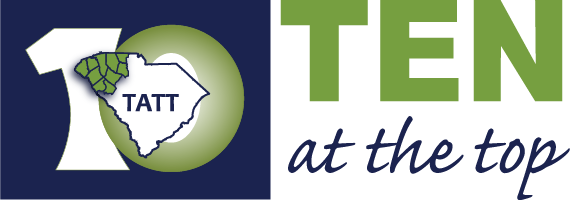 By: Dean Hybl, Executive Director, Ten at the Top
By: Dean Hybl, Executive Director, Ten at the Top
Imagine living in an Upstate region where no matter which city, town or county you lived in or your level of income, you knew that you had access to dependable and affordable transportation that could take you to your job, appointments or shopping and then back home again in a timely and relatively easy manner every single day.
While many of us are fortunate enough to have daily access to our personal automobile, chances are it takes you noticeably longer to get from place to place today than it did even five years ago. In fact, within the Upstate region, 94% of all people who work travel to their job using an automobile, with 85% driving alone and 9% car-pooling. That works out to somewhere around 690,000 vehicles on the roads across the Upstate every day just to get people to and from work.
A recent study by INRIX reported that the average motorist in Greenville spent 11.5 hours in 2016 stuck in congested traffic. They also estimate that traffic congestion costs the average motorist $1,200 per year in wasted gasoline and time.
However, while the biggest issue related to transportation for many of us is congestion, there are others within both the urban and rural areas of our region who simply do not have reliable personal transportation. While there are many places across the country where public transportation helps alleviate access issues, that isn’t really the case here in the Upstate.
Across the region, only 0.4% of all workers (roughly 3,000 of the more than 750,000 people working in the region) utilize some type of public transportation to get to their place of work. Those without dependable transportation often struggle to find or maintain employment because they can’t easily get to a job location.
So to reach our imagined future of a region where transportation is available and timely for all, access and congestion become two prominent issues that must be understood and addressed.
In partnership with more than 20 transportation and community partners, Ten at the Top is coordinating a year-long effort known as Connecting Our Future to develop a vision, strategic goals and impactful actions that can ultimately make it easier to move people and goods across the Upstate while reducing congestion and increasing mobility opportunities for all residents.
Since 2010, the Upstate has added more than 60,000 new residents, which based on employment numbers means every day there are between 30,000 and 40,000 more cars on our local roads than there were seven years ago.
Between now and 2040, the region is projected to add another 321,000 residents and 256,000 new jobs. That means unless we start doing something differently in terms of how people get to work every day, by 2040 we will have nearly a million cars on the road every day just to get people to work (not counting school buses, trucks or people traveling for appointments or shopping).
When I moved to the Upstate nearly eight years ago I heard from many people that they were glad to be living in a region with a solid and growing economy, but that they didn’t want to see this region consumed by some of the same characteristics of sprawling growth, traffic congestion and endangered natural resources as our neighbors in Charlotte or Atlanta.
The reality is that while we are not quite to the point of either of those areas, most of our current policies and investments put us on a collision course with that future. Models from the recent Shaping Our Future growth study showed that if we continue our current land use trends over the next 25 years, we will more than double the amount of land used for our built environment by 2040.
Transportation and specifically how we move people and goods from place to place is an important component of that land use and an area where doing things differently can have a significant impact on how we grow moving forward.
Communities that have successfully addressed transportation and mobility issues have typically done so through developing partnerships that include the business community, transportation stakeholders, local governments and other community partners. We hope through Connecting Our Future to develop a coalition of stakeholders who not only create a connected vision for mobility and transportation, but will work together to identify and implement strategies and solutions that will help make this a region where we no longer have to just imagine that every resident can get from where they are to where they need to go in a timely and affordable manner.
If transportation and mobility are important to you, please join us for the kickoff of Connecting Our Future on October 18th from 9:30am—2:30pm at the TD Convention Center. Details are available at http://www.connectingourfutureupstatesc.org.
